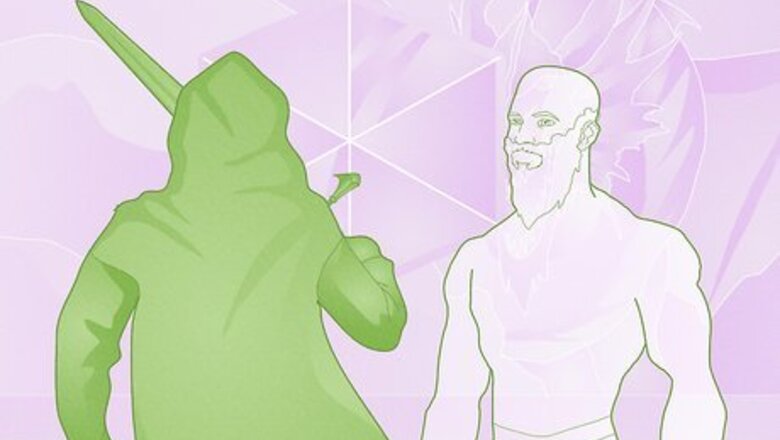
views
- Hiding in D&D 5e takes an action to do. To hide, roll a Dexterity (Stealth) check for your character and tell the DM (Dungeon Master) the result.
- The Hide action grants PCs advantage on their first attack roll against an enemy. It also forces enemies to roll attacks against hidden creatures with disadvantage.
- Use the Hide action to avoid enemy attacks by ensuring they can’t see your PC. Or, hide to give your PC a greater chance of hitting enemies at crucial moments.
What is the Hide action?

The Hide action is an ability creatures can use to go unseen. When you don’t want your character to be seen in D&D 5e, you can attempt the Hide action (both during combat and while out adventuring). Any creature can do this—not just player characters (PCs). Creatures hidden from their enemies get certain benefits in battle because the enemies can’t see them or react to their movements.
Hide Mechanics in D&D 5e
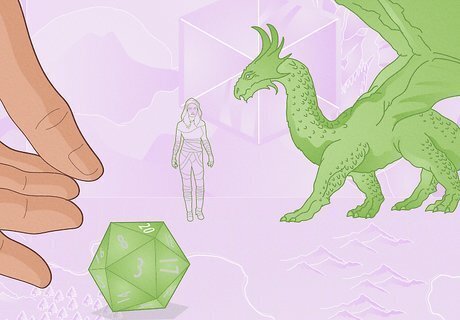
Creatures that want to hide must roll a successful Stealth check. Simply roll a d20 (20-sided dice) and add your PC’s Stealth modifier (listed under Skills on their character sheet) to make the check. From there, the DM will measure your PC’s Stealth check against nearby creatures’ passive Perception scores; if your Stealth check beats their Perception, your character is considered hidden. If not, your PC is not hidden. Before you can roll a Stealth check for your PC, the DM (Dungeon Master) must decide if it’s possible. Depending on your PC’s current position in combat, the DM may rule that hiding is impossible. For example, if your PC is standing right before an angry dragon, the DM would likely rule that they can’t hide. However, if your PC is crouching behind a pillar and hard for enemies to see, the DM would likely let you make a Stealth check to hide.
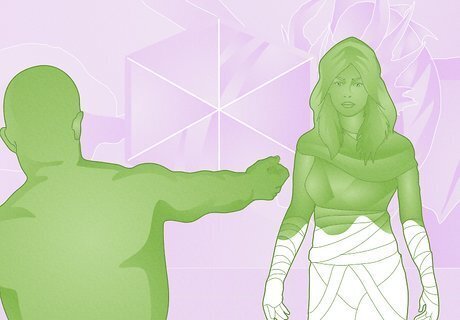
Characters must use an action to hide during their turn in combat. While in combat, you can opt to have your PC hide so long as it’s their turn and they take an action to do it. In combat, all creatures can use a single action, bonus action, and reaction per turn—which is why making the most of your actions is essential. After your PC takes an action, they can’t take another until the next round. The Hide action isn’t used often because it has such a high action economy cost for most players. However, it can be a lifesaver for your PC when used wisely.

Hidden creatures have advantage on their attack rolls. While your PC is hidden, they gain the benefits of an “unseen attacker” in combat. This essentially means you’ll be able to attack enemies who can’t see your PC, and your attack rolls are more likely to succeed because they have advantage. Having “advantage” lets you roll 2d20s and take the higher result when making an attack roll. However, attacking enemies always reveals your PC’s location, so your PC won’t be hidden anymore as soon you make an attack roll, whether or not it’s successful. This also means that, for PCs capable of making more than 1 attack per turn, you can still only have advantage for the first attack if they’re hidden.
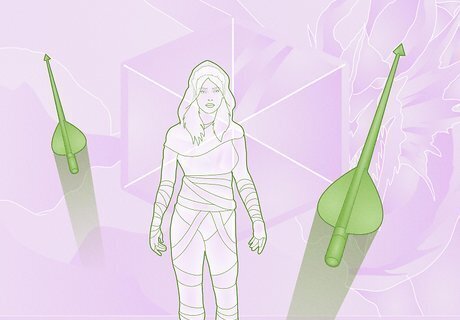
Attacks against hidden creatures are made with disadvantage. When your PC is hidden, it’s also harder for enemies to hit them! While being hidden doesn’t stop enemies from making attacks, any attack roll aimed at your hidden PC must be made with disadvantage, which means rolling 2d20s and taking the the lower result. An attack made at a disadvantage is less likely to hit successfully overall. Remember that the rules of the Hide action apply to enemy creatures, too. Hidden enemies get advantage on attack rolls against PCs, and PCs have disadvantage on attack rolls against hidden enemies. There are other ways to become an “unseen attacker” beyond the Hide action. Using the Invisibility spell (or any class ability that effectively makes your PC invisible) will also give them the benefits of an unseen attacker.
When to Use the Hide Action

Hide when you want to be sure your next attack will succeed. At times, hitting an enemy with your next attack may become super important, whether you’re trying to finish off a particular foe or stop them from doing something. In those cases, giving yourself an advantage on an attack by hiding may be the difference between successfully striking your foe or missing them entirely. For example, say your PC has the Sharpshooter feat (which grants a +10 to damage on an attack, but subtracts -5 from the attack roll). If you want to hit an enemy with the Sharpshooter feat, you might give yourself advantage by hiding; that way, your PC would still have a high chance of success despite the -5 penalty to their attack.
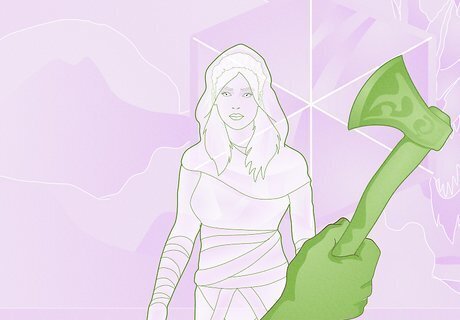
Escape enemy attacks by hiding and making them lose sight of you. If your PC is in a dangerous situation where they might be killed or knocked unconscious, hiding can give them time to escape or heal. When an enemy loses sight of your PC, they might stop attacking and go for a different character. Alternatively, the enemy might keep trying to attack—but with disadvantage, they have a higher chance of missing. Remember that your PC needs to be able to hide behind something on the battlefield to take the Hide action successfully. Hiding lets your PC go unseen (and unheard), but it won’t stop creatures with a keen sense of smell from locating them. Hiding can be a risky investment if your PC isn’t very dexterous (meaning they don’t have a high Dexterity score, which affects Stealth) or doesn’t have proficiency in the Stealth skill. It’s most likely to work for a stealthy, high-Dexterity character.
Factors Affecting the Hide Action

Cover Often, the most important factor affecting whether creatures can take the Hide action is cover. In 5e, “cover” is defined as walls, trees, creatures, and other obstacles that can shield targets and make them more difficult to harm. When it comes to hiding, a creature’s cover must be able to obstruct an enemy’s vision, making it harder to see them. However, there are 3 degrees of cover, and some DMs are more lenient with cover requirements than others. Partial cover includes half-cover (meaning an obstacle is blocking about half of your PC’s body), and three-quarters cover (meaning an obstacle is blocking three-quarters of your PC’s body). Total cover means that an obstacle is totally blocking your PC’s body, and they can’t be targeted directly by an attack or spell. Some DMs might rule that your PC can only hide if they have total cover, while others might decide it’s okay for a PC to hide with only partial cover.
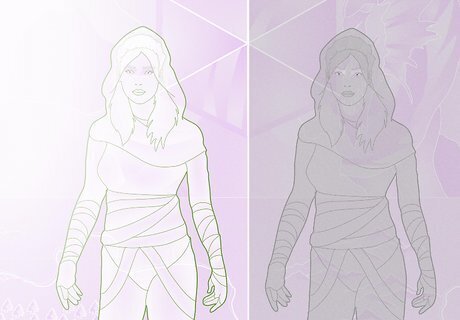
Light The level of light in an area (whether you’re adventuring indoors or outdoors) can affect how easy it is for enemies to see your PC and, subsequently, how easy it is to hide. When it’s nighttime outside or your PC is in a dark area, they may naturally be obscured, making it easier to take the Hide action. Conversely, in the daytime or in areas filled with bright light, your PC may find it harder to hide. Light levels in 5e are generally defined as “bright light,” “dim light,” and “darkness.” PCs are often considered lightly obscured in dim light and totally obscured in darkness.
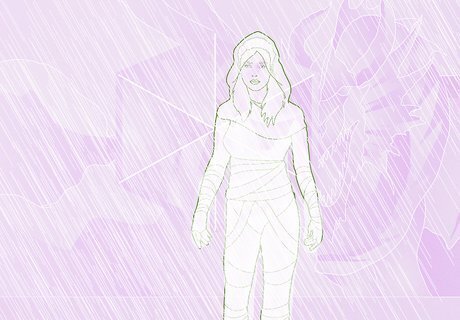
Weather conditions Some weather conditions in 5e can affect creatures’ vision, including fog, heavy rain, a blizzard, or a sandstorm. Not only can these weather conditions directly affect vision, making it harder for enemy combatants to see (and target) your PC, but they also affect light levels, darkening the area and making it easier for PCs to take the Hide action. Creatures trying to operate in areas obscured by darkness or an adverse weather condition may have their vision blocked entirely—if they do, it means they effectively have the “blinded” condition.
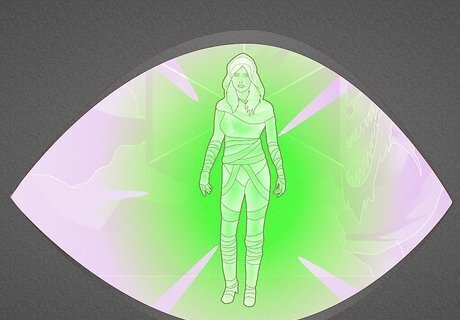
Darkvision, blindsight, and truesight Although factors like light, weather, and cover make it easier for PCs to hide, specific abilities make it easier for enemies to sense them. Creatures with darkvision can see naturally, even in darkness, while creatures with blindsight rely on other senses (like smell and hearing) to detect others—so factors that obscure vision don’t apply to them. Creatures with truesight can perceive PCs through mundane or magical effects obscuring them, like invisibility or an illusion. If a creature has darkvision, blindsight, or truesight, it may be much harder to hide from them successfully. Darkvision is common among nonhuman races (including playable ones), and creatures with darkvision often have it out to a range of 60 feet (although there are exceptions). Truesight is extremely rare but also very powerful. PCs are unlikely to have truesight unless they have access to the True Seeing spell or an item that grants truesight (like a Gem of Seeing).
Who can use the Hide action regularly?
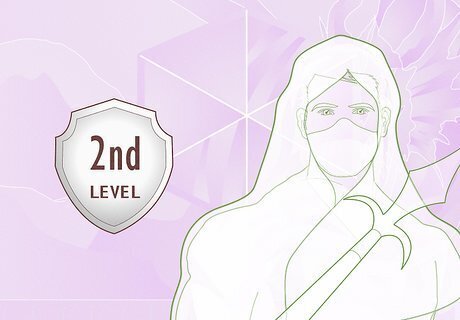
Rogues Upon reaching the 2nd level, all rogue characters get the Cunning Action feature. This lets your rogue PC dash, disengage, or hide as a bonus action—not as an action. This makes the Hide action much more accessible (and valuable) since you can still use your action to attack enemies. Plus, hiding as a bonus action gives your rogue PC the chance to attack enemies with advantage in the same round—which also lets them use their Sneak Attack feature. Sneak Attack is a feature that adds extra damage to a rogue’s attack once per round, so long as they have advantage on the attack. Ranged rogues (wielding a crossbow or short bow, for example) can benefit from hiding and sneak attacking once per turn since they can take cover without going toe to toe with enemies.
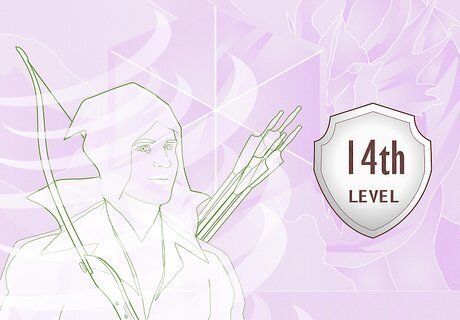
Rangers At the 14th level, all ranger PCs get access to the Vanish feature, which lets them use a bonus action to hide instead of an action. This lets rangers use both the Hide action and their bonus action more reliably—and, of course, it gives them advantage on their attack rolls. The only real downside is that rangers don’t get this feature until level 14, which is relatively late compared to level 2 for rogues.

Way of the Shadow Monks If you’re playing a monk PC and choose the Way of the Shadow for their subclass, you’ll get a 6th-level feature called Shadow Step. With this feature, while your PC is standing in dim light, they can use a bonus action to teleport 60 feet to a space also covered in dim light or darkness. After doing that, your PC has advantage on the first melee attack they make before the end of the turn. This technically isn’t the Hide action, but Shadow Step does grant some of the same benefits—namely, the ability to gain advantage on an attack. This feature is also super convenient because it doesn’t require your monk PC to spend any ki points to pull it off.


















Comments
0 comment